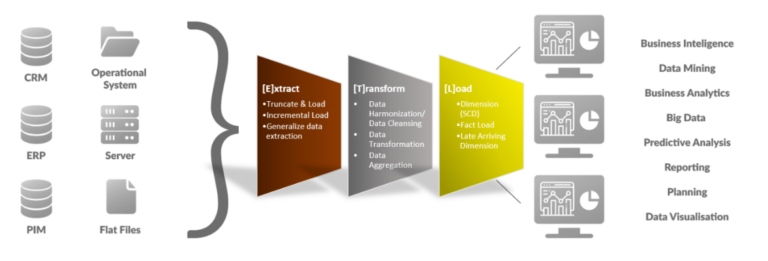- Solutions
Our solutions
Digital solutions combining strategy, technology, automation and people.
Technology advisory
Navigate the fast-changing world
Cloud engineering
Transformational change at scale and speed
Data solutions
Realise the untapped potential of data
AI and machine learning
Leverage your data assets
Application engineering
Optimise and grow your digital investment
Maintenance and support
End-to-end application management
Business process solutions
Manage business processes to reduce operating costs
Quality solutions
Independent testing for your systems and software
Digital experience platforms
Redesign your digital assets for the optimal customer experience
- Industries
Industries
We provide solutions tailored to your sector to assist you in identifying opportunities, realising value and opening up new markets.
Banking
Delivering next-gen banking solutions that drive growth
Healthcare
Patient empowerment, lifesciences, and pharma
Retail
Functional and emotional customer experiences online and in-store
Travel
Airlines, online travel giants, niche disruptors
Media and publishing
Content consumption for the tech-driven audience
Hi-tech and IOT
Real-time information and operational agility and flexibility to respond to market changes
Logistics and supply chain
Reimagine a supply chain that is more flexible and resilient to change
Education
Create an exciting and engaging digital experience for students and departments
Insurance
Streamline operations, expedite claims, and unlock new possibilities
- Our thinking
Our thinking
The latest updates to help future-focused organisations on the issues that matter most in business.
News
Keep up to date with company news and announcements at NashTech
Insights
The latest expertise and thought leadership from the NashTech and our clients
Resources
Expert guidance on everything from complex technological issues to current trends
Digital Leadership Report
Explore insights from the latest world's largest and longest-running study on technology leadership
- Case studies
- About us
About us
Find out what makes us who we are
Leadership
The diverse leadership team at NashTech
Nash Squared
A global professional services organisation with three key areas of focus
Vietnam 360°
Experience a 360 degree all-encompassing virtual tour of NashTech’s Vietnam offices
ESG
Discover our environmental, social and governance commitments
Diversity, equality and inclusion
Making diversity, equality and inclusion an integral part of our culture
Our locations
Discover our network of global offices, centres of excellence and innovation
- English
The importance of ETL testing in projects that involve integrating data from multiple sources

When building up a system which needs more data such as for decision-making, market analytics, risk management, we need a large data from different sources such as systems, databases, files, etc. As such, the process of extracting data from various sources, transforming it to fit the specific business needs, and loading the data into a target database or data warehouse is called ETL (Extract, Transform, Load).

In software testing, the process of verifying the accuracy, completeness and quality of data during the ETL process is called ETL testing.
In this article, we’ll explore some of the challenges of ETL testing and how we check that the data safely traveled from its source to its destination and guarantee the data high quality before it enters your business intelligence reports.
ETL testing approach
There are various ETL testing approaches, but it is recommended to follow the data from the data sources through each step in the ETL process as this approach focuses on the data. It allows the team to easily identify and address any issues or bugs that arise by following the step-by-step flow of the ETL process.
The process also offers several benefits, such as improved problem pinpointing, better collaboration with the development team and enhanced overall testing effectiveness.

ETL testing type
The testing types used will depend on the specific requirements and goals of the project. Here, we focus on the data testing to verify that the data is correctly transformed and loaded into the target system, and that it meets the required quality standards.

- Data completeness testing: Verify that all expected data loads into the data warehouse
- Data transformation testing: Validate data is transformed correctly based on business rules
- Data quality testing: Verify the accuracy of the data
- Metadata testing: Verify the table definitions conform to the data model and application. Carries out data type, index, length and constraint check of the ETL application metadata
- Incremental testing: Verify updates on the sources are getting loaded into the target system properly
- Performance testing: Verify the ETL batch loading system should be able to extract and load the records in a timely manner or as required
- Integration testing: The goal of ETL integration testing is to perform end-to-end testing of the data in the ETL process and the consuming application
- Regression testing: Verify that the ETL is producing the same output for a given input before and after the change. Any differences need to be validated whether are expected as per the changes
ETL testing methods
There are several recommended testing methods for ETL testing:
- Sampling technique: Sampling techniques involve selecting a representative subset of data from a larger dataset for testing. This approach helps optimise coverage, save time and still provide meaningful insights into the ETL process. By selecting a statistically significant sample, potential issues can be identified efficiently and the functionality of the ETL pipeline can be validated
- Use Excel/compare tools: Using Excel/compare tools can be beneficial for various tasks, such as data comparison, validation and analysis. These tools offer features that help streamline the testing process and improve efficiency
- Utilise automation utility: Teams can utilise automation test to run all test scripts one time. It helps to save time and testing effort
- Use ETL automation test tools: ETL testing tools are software applications designed to automate the ETL testing process and help ensure data accuracy, completeness, and consistency. Here are some supported tools:
- Informatica data validation option: Informatica DVO is a comprehensive data validation and testing tool that ensures data accuracy and completeness across multiple systems
- QuerySurge: It is a data testing and validation tool designed specifically for Big Data and data warehouse environments
- ETL Validator: It is an ETL testing automation tool developed by Datagaps which helps in automating the ETL/ELT validation during data migration and data warehouse projects. ETL Validator is one of the top ETL testing tools available in the industry for 100% data validation and has multiple features and benefits when compared with competitor
ETL testing challenges and solutions
ETL testing is a complex process that involves several challenges. Here are some of the significant challenges faced by testers during the process:
Challenge: Bad data sources
Manual data entry can introduce errors, both intentional and unintentional, and inconsistencies can arise when users input units of measurement in written or abbreviated forms. Additionally, manual data entry can lead to duplicate records, particularly when multiple people are involved in the same project.
Solution: To overcome the challenge posed by bad data sources during ETL testing, several strategies can be employed:
- Implement tools (Macro) for historical data: In cases where historical data needs to be transferred to standardised formats, the development team can create macro tools. These tools automate the transformation process, ensuring data consistency and accuracy. By standardising the historical data, it becomes easier to validate and integrate it into the ETL process
- Create new templates/tools for upcoming data: For new data entries, it is beneficial to develop new templates or tools to assist business users. These tools can provide data validation rules, drop-down menus, or other features that enhance data entry accuracy. Additionally, improving the application used for data processing can ensure that clean and up-to-date data is available for all future monthly data uploads, reducing the chances of human errors during manual data processing.
By implementing these strategies, organisations can mitigate the challenges caused by bad data sources, improve data quality, and streamline the ETL testing process.
Challenge: Huge and complicated data sets
The presence of a vast amount of data in various sources, including multiple file formats, compatible databases and proprietary data formats, highlights the need to harmonise and consolidate the data into a single source. This consolidated source then feeds into BI reports, which drive business decision-making. Cleansing and harmonising the data is necessary to ensure its accuracy, consistency and reliability for effective analysis.
Solution: To address the challenge of dealing with huge data during ETL testing, the following approaches can be beneficial:
- Utilise sampling techniques: Working with large volumes of data can be time-consuming and resource intensive. To optimise coverage, testers can employ sampling techniques. By selecting representative subsets of data, they can focus their testing efforts on a smaller yet representative portion of the overall dataset. This helps in identifying potential issues and validating the ETL process without the need to process the entire dataset.
- Automate data comparisons: Comparing large datasets manually can be error-prone and time-consuming. To overcome this challenge, testers can leverage automated data comparison tools such as Beyond Compare or Datatific tool. These tools provide efficient and accurate comparisons between source and target data, highlighting any discrepancies or inconsistencies. Automating the comparison process helps save time and ensures thorough validation of the transformed data.
By employing sampling techniques and leveraging automated data comparison tools, we can effectively tackle the challenges associated with handling large volumes of data in ETL testing. These approaches contribute to improved efficiency, enhanced coverage and more accurate validation of the ETL process.
To overcome the challenges posed by complicated data during ETL testing, the following strategies can be implemented:
- Rank data sources: When dealing with complex data, it can be helpful to rank data sources based on their importance. Identify the critical data sources that significantly impact the business processes or decision-making. Prioritise testing efforts on these high-priority data sources to ensure their accuracy and reliability
- Collaborate with business users (BU): Close collaboration with BUs during ETL testing helps them to understand the business requirements and identify any gaps or inconsistencies. By addressing these gaps early on, we can align the ETL process with the business expectations, reducing the risk of errors and ensuring accurate data transformation
- Involve client testing early: Encourage clients to involve the testing team as early as possible in the ETL process. This allows us to provide feedback and identify potential issues during the design and development stages. Early involvement ensures that complications related to complex data are identified and addressed promptly, reducing rework and saving time and effort
- Obtain test cases/scenarios for UAT: Request the client provides test cases or scenarios for user acceptance testing (UAT) stage. These test cases align the ETL process with the client’s specific requirements and expectations. Having predefined test cases facilitates smooth UAT execution, streamlines the validation process and reduces the overall time and effort required for testing.
By implementing these strategies, we can effectively tackle the challenges associated with complex data in ETL testing. Close collaboration with the business users, early involvement in the process and leveraging client test cases contribute to ensuring accurate data transformation and meeting the business requirements.
Conclusion
ETL testing is a testing procedure for data warehousing projects as it contributes to the construction, management, and security of integrated or migrated data. This process ensures the validation, verification and qualification of data, effectively preventing data loss and duplicate records.
In today’s software development industry, ETL testing is becoming increasingly significant due to the rising prominence of agile, DevOps, artificial intelligence and cloud technologies.
At NashTech, we have distilled the expertise and experience we have perfected in testing and quality management over many years into a set of solutions for our clients to ensure that their data is in good hands. For superior results, collaborate with our team of experts.
Suggested articles

The art of human-AI collaboration: A case study in model improvement
For over 16 years, NashTech has been a trusted partner, providing data management solutions that have fuelled the exponential growth of our client’s online shopping platform. The approach has...

From rising above adversity to riding the wave of digital transformation in the education sector
Explore how NashTech help Trinity College London ride the wave of digital transformation in the education sector

Migrating and modernising the virtual learning environment to AWS for an enhanced experience
The migrated and modernised Moodle infrastructure means that The Open University can now take advantage of cloud benefits.
We help you understand your technology journey, navigate the complex world of data, digitise business process or provide a seamless user experience
- Topics:


